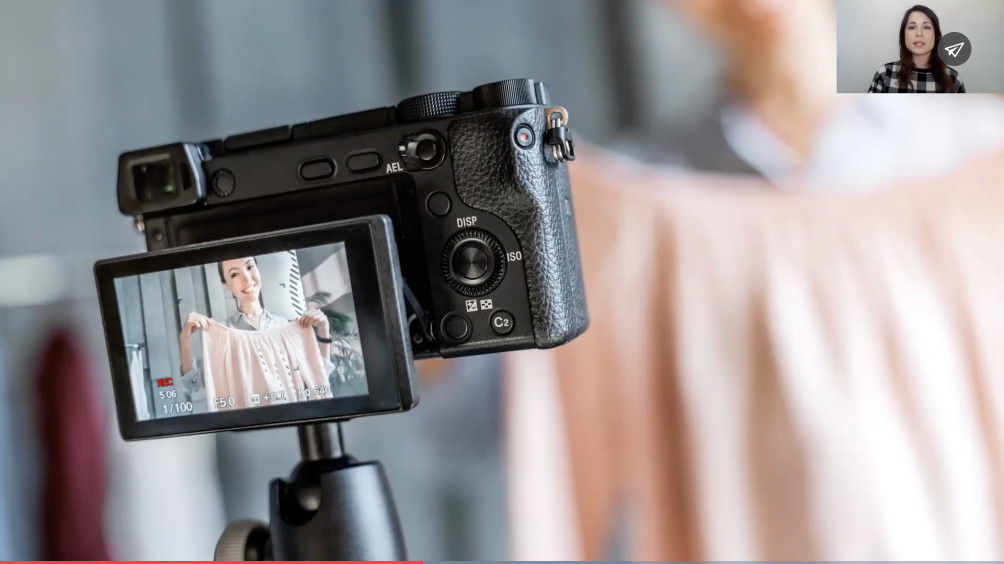What issue can we solve for you?
Type in your prompt above or try one of these suggestions
Suggested Prompt



Retail
4 Ways Livestream Shopping is Taking E-Commerce to the Next Level
4 Ways Livestream Shopping is Taking E-Commerce to the Next Level
Livestream shopping can reduce common barriers to purchase that other commerce experiences just aren’t delivering.
Finally, the missing link of livestreaming is here – the ability for consumers to purchase products directly from the video.
Livestream shopping (or livestream e-commerce) incorporates live video content, two-way communication, and the ability for viewers to seamlessly buy or save featured products directly from the platform. Think of it like QVC-meets-social-media, with an integrated e-commerce module replacing the 1-800 number.
For retailers, benefits of livestream shopping include reduced consideration period, increased customer engagement and higher sales. The U.S. livestream shopping market is expected to reach $11 billion by the end of 2021 and $25 billion by 2023, according to Coresight Research. In China, livestream shopping skyrocketed from $66 billion in 2019 to $150 billion in 2020 according to iResearch, a market research firm based in Shanghai. Coresight expects China’s livestream shopping sales to reach $300 billion in 2021.
"Livestream shopping enables retailers to develop deeper connection with consumers due to the immediacy of the interactions, leading to increased sales and share of wallet," Sudip Mazumder, retail industry lead, Publicis Sapient, said.
Below are four considerations to help evaluate how livestreaming fits into an overall e-commerce strategy.


Livestream shopping can reduce barriers to purchase that other e-commerce experiences just aren’t delivering. Virtual try-on sessions, beauty Q&A's and in-store demos can help at-home shoppers make decisions faster.
While fashion retailers and beauty brands have been the early adopters of livestream shopping, there’s plenty of opportunity for grocery, big box, specialty retailers in the space. For example:
- A home improvement retailer could walk viewers through its latest garden center offerings for a specific region while answering customer questions about products in real time, building trust and engagement. Viewers can add products to their cart directly from the livestream and select curbside delivery for a seamless end-to-end experience.
- A grocer could offer Saturday morning livestream shopping sessions with ideas and inspiration for recipes or holiday-related events. Whether it’s crafting the perfect game-day spread, a backyard BBQ, or a holiday dessert bar, hosts can offer tips, answer questions about dietary alternatives and make complementary product recommendations. Featured items can be purchased straight from a livestream module, ideally with same-day delivery options.
- A furniture retailer could educate shoppers on its sofa collection, demonstrating fit/feel with different size models and highlighting differences in fabric and firmness. The ability to field questions backs up performance promises, delivering the assurance users need to make a big-ticket purchase online and ultimately reducing costly returns for the retailer.
"Livestream experiences are compelling because they bring the store closer to the customer in a way that feels engaging and human," Eiko Kawano, group creative director, retail experience lead, Publicis Sapient, said. "The experiences support a range of customers who may be unable to visit a store or who prefer to shop from the comfort of their home creating better access for all."

There are two primary paths for enabling livestream shopping; either the livestream platform integrates with a retailer’s e-commerce platform or it’s hosted on a third-party platform like Amazon, Facebook, or Google’s Shop loop.
Integrating a livestream shopping platform into an owned website or mobile app gives retailers the most control around inventory management, carts, customer accounts data. Players in this space include LiSA and Bambuser.

"Platforms like these basically serve as an adjunct to your system," Jon Panella, GVP of technology, Publicis Sapient, said. "While they can be deployed relatively quickly, you’ll also want to consider capacity and scalability when it comes to the inevitable peaks and valleys in traffic resulting from a livestream shopping event."
Using a third-party platform like Amazon Live or Facebook Live Shopping can be easier to implement at first – particularly if you are already using those channels for commerce. However, de-centralizing the commerce experience away from a retailer’s own platform can be a less appealing proposition in the long run.
Moving commerce away from owned platforms means giving up control of the overall customer experience – including opportunities for personalization and re-engagement. It’s also a lost opportunity for data capture and retargeting.

Think ahead to how (or if) content can be repurposed from livestream shopping events. Retailers who choose to host on their own domains can offer video archives where viewers can watch past events on demand. However, depending on a retailer’s technology platform, archived editions may not include the shoppable component or chat history.
Retailers can also consider how to use content in smaller segments via social or other channels. Consider how a livestream excerpt might enhance a product detail page.
"If leveraging content from events is a goal, structure content in a way that makes it easier to parse out afterwards," Anne Casson, VP, group creative director, Publicis Sapient, said.
"Livestream experiences are compelling because they bring the store closer to the customer in a way that feels engaging and human. The experiences support a range of customers who may be unable to visit a store or who prefer to shop from the comfort of their home, creating better access for all."
Eiko Kawano , Group Creative Director, Retail Experience Lead, Publicis Sapient

While conversion is the end goal, retailers can assess a broad set of outcomes from livestream shopping efforts, including:
- Customer data: Who attended the live event? What did they buy or save? What types of questions did users ask during the livestream? How do these insights inform strategy going forward?
- Overall engagement: Particularly compared to other content streams.
- Reduced consideration period and reduced rate of returns based on the ability for viewers to ask questions during the event and see the products outside the content of a static product detail page.
The potential to engage audiences and boost sales with livestream shopping is significant, and there’s opportunity for retailers of all kinds to explore how livestream shopping fits into their larger e-commerce strategy.
Related Reading
-
![]()
Creating Walmart Canada’s Urban Supercentre Concept Store
Publicis Sapient design and technology helps enable frictionless checkout.
-
![]()
Retail Store of the Future
Experience how a digitally enabled retail store can drive value for your business and your customers.
-
![]()
LEAD Experience Audit
The LEAD Experience Audit is a comprehensive review of current customer experiences to identify weaknesses, strengthen strategies and build solutions. Altogether, our team goes into incredible depth and leverages data to create extraordinary customer experiences.







